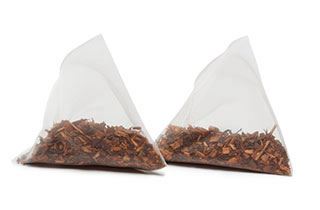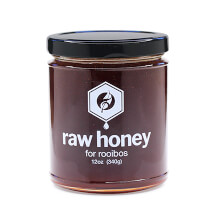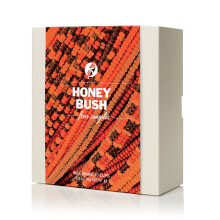93
honeybush
based on 824 reviews
Honeybush is a sibling of Rooibos, cultivated in South Africa's Eastern Cape region. Its flowers smell of honey, earning this plant a sweet name. The taste of our honeybush tea is similar to that of rooibos, though arguably a little sweeter. It has a smooth, gentle roasted flavor and slightly fuller bodied than rooibos. Clean, refreshing finish and naturally caffeine-free.
Herbal Tea | No caffeine | Steep at 212° for 5 mins
Tea Timer
Customer Reviews (824)
Teabags
Our teabags contain the same high-quality tea as our loose-tea offerings. Their pyramid shape gives the leaves plenty of room to unfurl and infuse, placing more flavor in each cup. Enjoy the superior flavor of gourmet tea with the convenience of a disposable bag.
teabags
15 full leaf pyramids
$9
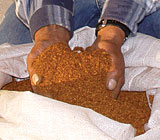
Lore
The honeybush was first cited by Etienne Pierre Ventenat in 1808, and is one of 20 members of the Fabaceae family of flowering legume plants. Honeybush has dozens of species in the wild, of which mainly several grow widely in South Africa. It’s called Heuningbos in Afrikaans, the language of the Dutch settlers in South Africa) and also known botanically as Cyclopia or Ibbetsonia, named for the physiologist, Agnes Ibetson. Its taste is more like the leaves of its cousin, rooibos or red bush, but it is sweeter and fragrant as honey which is why the English name is honeybush.Raw Honey for Rooibos
This dark rich honey adds a playful floral sweetness to the fruity notes of rooibos and honeybush.
12oz
honey for rooibos & honeybush
$9
Part of honeybush teas sampler
Explore a variety of teas with our popular sampler set. Four teas included are: honeybush hazelnut, honeybush mango, honeybush, honeybush vanilla
honeybush teas
will make 40 cups
$14
Questions and Answers
Ask a question about honeybush and have the Adagio Teas community offer feedback.
how much tea for 1 cup
GF
Asked by Geri Freedman
on November 6th, 2021
on November 6th, 2021
1
VIEW REPLY
HIDE REPLY
Meet our rooibos farmer, Niklaas Jakobus Slinger
To ensure the best quality and value, we import our teas directly from the countries in which they are grown, working closely with the farmers who tender them. Our Roots Campaign connects our customers with the rich stories and the farmers behind some of our most popular teas.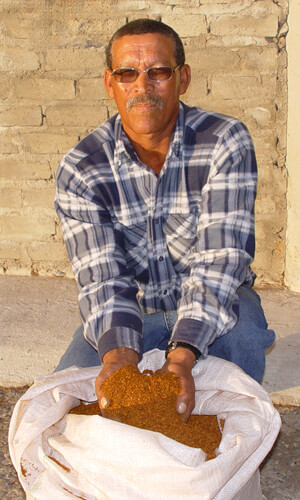
How long have you been growing tea?
“32 years. I started working as a laborer on a neighboring Rooibos Farm and for the past 14 years I have been growing Rooibos on my own farm.”
What got you started in the tea industry?
“I grew up on a Rooibos Farm. After I left home, I worked on different farms producing a wide variety of agricultural products, but my love for Rooibos and the area in which I grew up brought me back home. Since I was a small boy, I dreamed about owning my own Rooibos Farm and 14 years ago my dream came true with the help of my previous employer who helped me to loan money to purchase my own Rooibos farm.”
Can you describe a typical day out in the field? How many hours would that be?
“During Harvesting season (January - April), I leave home at 05:00 in the morning to turn the Rooibos fermentation heaps on the drying yard. I then go to the fields and start harvesting the Rooibos. At 10:00 I return to the drying yard to open the fermentation heaps and spread the Rooibos thin and evenly to dry. I then continue harvesting till we break for lunch at 12:30. After lunch (14:00) I take the harvested Rooibos to the drying yard for further processing. After cutting and bruising the tea is put into fermentation heaps around 18:00. After that we collect the dried Rooibos from the drying yard. My day ends at around 19:30. A typical working day is around 13 hours during harvesting season.”
You'll Also Enjoy
rooibos
12¢ / cup
score: 93
green rooibos
15¢ / cup
score: 92
honeybush hazelnut
15¢ / cup
score: 94
honeybush chocolate
15¢ / cup
score: 92
